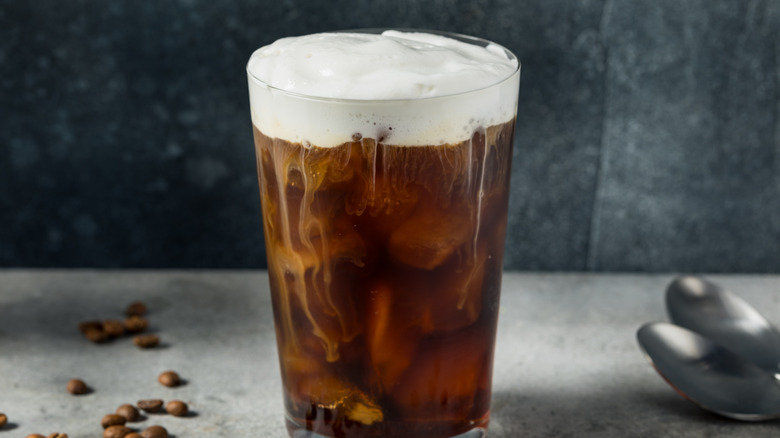What Makes A Cold Foam Different From Steamed Milk?
Cold foam is the cool new kid on the coffee shop block. The silky smooth topping that's been blanketing your daily cold brew can be whipped up in an array of alluring flavors like vanilla, brown sugar, banana, and yes, even the ever-popular pumpkin spice. What is a coffee without a fluffy finish? Cold foam seems to be having the trending moment that elaborate latte art was enjoying just a few years ago. So, what is the difference between cold foam and steamed milk?
The obvious answer to what sets the two apart, is that cold foam is made from cold milk (or a dairy alternative) and steamed milk is hot. Because of their varying temperatures, preparation methods, and consistencies, the toppings don't pair well with the same kinds of coffees. The steamed milk atop your latte works best with hot coffee drinks, while iced beverages can support a hearty dollop of cold foam.
Cold foam vs. steamed milk
Cold foam is frothed milk (regular, oat, almond, soy), created from aerating milk with a blender, frother, or French press. For a quick cold foam (and an arm workout), you can even give a mason jar full of milk an intense shake if your kitchen isn't stocked with gadgets. Cold foam is heavier and creamier than steamed milk, and can be made with flavored syrups, spices and sweeteners. It might sound a lot like the usual whipped cream you drop into your cup of hot chocolate. Whipped cream however, is usually made from heavy cream. The final product is thicker and weightier.
Regular steamed milk is stiffer and airier than cold foam — it dissipates as it hits your lips. The perfect milk foam is the substance behind intricate latte art. Steamed milk completes cafe lattes, macchiatos, and classic cappuccinos. When milk is steamed, it sucks air into the milk as its heating, giving the topping its signature texture.

